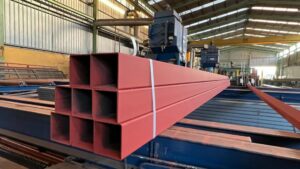
The OECD has reiterated the need for further global steelmaking capacity reduction after the unexpected growth in capacity in the first half of 2019 despite weak global demand conditions.
At a meeting last week the OECD Steel Committee stressed that “…government interventions, market distorting support measures and resulting excess capacity have contributed to significant distortions in steel trade flows, that are affecting steel-producing economies and contributing to trade tensions.” Moreover, “certain border and behind-the-border measures… are distorting steel markets and steel trade, not least affecting raw material.”
Last month the OECD revised downwards its global economic growth forecasts to 2.9% in 2019 and 3% in 2020, the weakest annual growth since the financial crisis. Trade policy tensions are weakening confidence and business investment, while persistent weakness in the manufacturing sector is negatively affecting household incomes and spending, the committee said. Significant financial market vulnerabilities have also arisen from a high level of indebtedness coupled with a slower growth environment.
The latest available data show an increase in global steelmaking capacity in H1 2019 to an annualised level of 2,290.1 million tonnes. In the absence of additional capacity closures during the remainder of 2019, global capacity would increase this year for the first time since 2015, the committee pointed out. The gap between global capacity and production has widened to about 440mt.
“At the same time, many new investments contributing to excess capacity continue to take place in specific jurisdictions, and many others are in the planning stage,” the committee said in a note seen by Kallanish. Should these projects be realised, global capacity could increase by 2-3% between 2020 and 2022.
The committee also “…called for the removal of subsidies and other government support measures that hinder the exit of inefficient steel firms. Delegates also noted the importance of addressing consequences of structural adjustment by applying effective social dialogue and assisting displaced steel workers.”




